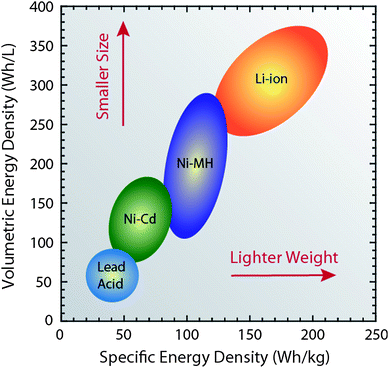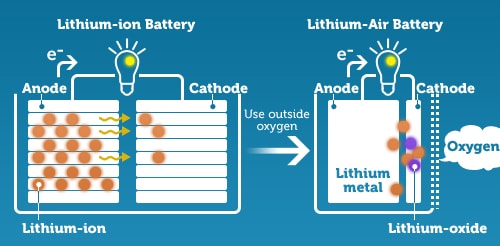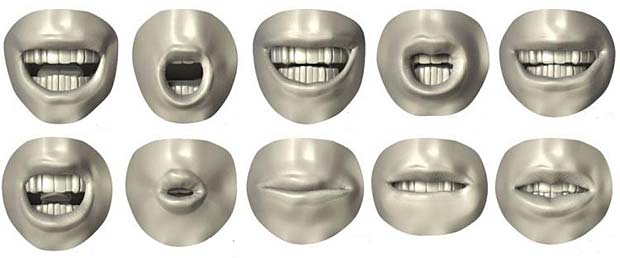By Leendert van der Ent, Audiology Infos The Netherlands
Rechargeable batteries for hearing aids have been around for some time. Until recently they were a footnote in hearing aid history. That is now about to change. Now the milestone of a full day of service-without-recharge can be guaranteed, the market seems on the brink of change. The less doubt about success of ‘rechargeable’, the more the market wonders about the shape of things to come: what chemistry will prevail? And will integrated systems or rather replaceable standard sized rechargeable batteries define the future?
The Customer Perspective
The survey by Hearing Tracker is quite clear: “New rechargeable technologies – that provide longer battery life in smaller packages – are leading many hearing aids consumers to consider making the switch.” This conclusion is based on a survey with 510 hearing aid using respondents, co-funded by ZPower. 70% indicated a preference for rechargeable hearing aids, against 24% preferring primary batteries. Sonova Group Director of Media Relations, Michael Edmond Isaac, agrees: “Research revealed that rechargeable batteries and rechargeable hearing aids combined are the top features that people are seeking in a new hearing aid.”
A full day of use is a must: for 85% of respondents this is a top priority for a rechargeable hearing aid. Meeting this demand can therefore be regarded as a game changer. As it happens, this demand has recently been times on these chargers, Power One claims. The batteries are also supposed to be entirely recyclable.
Even more recently, Phonak launched the Audéo B-R hearing aids as part of the new Belong series, with built-in lithium-ion rechargeable battery in a sealed compartment. It promises to offer twenty-four hours of use, eighty minutes of streaming included.
Upcoming is Signia Cellion Primax. Although it is beaten to the punch by Phonak Audéo’s launch date, in turn it promises twenty-four hours of use – but with unlimited streaming. Furthermore, it offers wireless charging thanks to induction. For both brands the lithium-ion battery technology is supposed to last for the hearing aid’s entire lifecycle.
The Manufacturer’s Stand
Sivantos spokeswoman Erika Weigmann agrees that the NiMH technology has come to the end of its lifetime: “Sivantos has been offering rechargeable systems with NiMH technology for the past ten years. There has been no advancement in NiMH battery technology, maybe due to the fact that its application in hearing aids is a niche. It is not the technology to meet the increased energy demand of new binaural technologies.”
Understandably, Isaac is happy with Phonak’s launch of the Audéo B-R: “Power consumption and battery technology have always been technology focus areas for the Sonova Group. Our rechargeable hearing aid is the first ever hearing aid to feature a built-in lithium ion rechargeable battery, providing twenty-four hours of hearing with a charge of just three hours. Twenty four- hour use is a game changer for rechargeable hearing. Today, lithium-ion is the fastest growing and most promising battery technology that offers 40% more power than conventional rechargeable batteries. This makes Phonak Audéo B-R the quickest charging, longest lasting rechargeable hearing aid ever. Wireless charging is an interesting enhancement but it is yet to be seen if the size and charging speed drawbacks can be overcome.”
What does Isaac consider to be the advantages of integrated rechargeable batteries over exchangeable batteries? “Since the expected lifespan of lithium-ion is four years, it makes sense to integrate the battery into the housing of the hearing aid. This helps to increase the durability and reduces corrosion of the battery contacts. It also avoids adding additional size to the hearing aid for the mechanics of an opening battery door. The built-in battery frees customers from having to change batteries. It also allows the housing to be sealed, which means there is less chance of water and dust entering the hearing aid.” Isaac expects other brands to follow with rechargeable hearing aids: “Also with lithium-ion technology, as the fastest growing and most promising battery technology.”

Comparing battery technology. Image courtesy RSC
Weigmann explains why that is the case: “Silver-zinc cells, offered by a single supplier, have a cell lifetime and capacity not much higher than NiMH. A 312 NiMH battery has 23 mAh capacity while silver-zinc has 32 mAh. Silver-zinc cells require an additional down converter, which makes the hearing aid bigger. Sivantos decided for the already widely used lithium-ion battery technology because of capacity, performance, mass-predictability and economy. Future technical advancements are likely for lithium-ion and customers are familiar with their use. The lifetime of up to five years is far superior to the other battery technologies and charging goes fast.”
Widex generally agrees with this vision on lithium-ion, but draws a different conclusion, says the company’s Senior Vice-President of Global Development, Lars Oddershede Sunesen:
“Lithium-ion is the most viable solution of the classic rechargeable technologies. Energy density is good and the cycle life is acceptable, but there are issues with charging time. Moreover, it’s a very mature technology, which makes the development potential limited and time-consuming. Fuel cell technology, on the other hand, has a large unexplored potential that we expect to harvest in the future. Based on this technology, we are working on a solution to enable recharging within seconds. Fuel cells have many advantages. They are a clean and green energy source. Fuel cell hearing aids will be far easier to handle for the end-user, as battery change or lengthy recharge process is no longer needed.”
Oticon also rates the rechargeable battery technology as still too immature for use in modern hearing aids yet. In the words of Søren Nielsen, President of Oticon: “A hearing aid is not a cell phone that you can plug into power at your own convenience; people fully depend on it during a full day and cannot afford the battery to go dead. Modern technology consumes more power, elaborate algorithms cause the power use of hearing aids to go up instead. Therefore, the threshold of twenty-four-hour use before recharge could remain challenging. Notten: “Moore’s Law – a doubling of chip calculation speed every two years, more than forty per cent per year – still holds. For batteries such growing speed is impossible. There is a mismatch between growing calculation speed and the energy that batteries can provide. The fundamental limitation is that you can only free two electrons from one atom – that law of nature cannot be changed. A five per cent output growth might be sustained for a longer period, thanks to thinner casings, thinner separators, thinner current collectors as well as materials development.”
The lithium-air battery, which is under development in several technological variants, is a promise for a future several decades away, says Notten. “It is a hybrid battery with features of a fuel cell. It is not very stable and still has the downside of a liquid electrolyte.”

Lithium-Ion vs. Lithium Air Battery. Image courtesy LTC blog
It is therefore doubtful whether it will become available on the market before the arrival of the solid matter, which in Notten’s opinion is the ultimate battery technology: “Eventually, solid matter/thin film batteries will become the dominant technology. We are working hard to make the step from graphite to silicon, which holds the promise of a ten times higher energy density. The biggest plus is that the electrolyte is made of solid matter. This is inherently safer than all other chemistries, which are based on liquid electrolytes.”
A solid electrolyte rules out any risk connected with hazardous liquids and also has a positive side effect on energy density of the battery as a whole, says Notten: “As a consequence of replacing a liquid by a solid, the separator as a ‘passive’ component can become smaller and can thus leave more room for the ‘active’ energy carrier.”
Silicon has of course also the benefit of easy integration with electronics, Notten explains: “An integrated battery means at the moment that a classic battery is soldered in the closed casing, as opposed to a replaceable battery. Silicon solid batteries will become really integrated in the way transistors and capacitators are now already integrated in electronics. This holds of course additional benefits for production costs and the size of the end-product.”
But this technology will certainly not arrive overnight. Notten:
“My experience with developing NiMH technology, which resembled the existing nickel– cadmium technology, has taught me that the period from lab development to market launch takes more time than expected. In this case, it involves a much more fundamental change. Therefore, we will not witness the solid matter battery to take over for at least half a decade – or more.”
In Conclusion
Both consumers and hearing aid professionals are ready to adopt rechargeable battery solutions. Question is, which technology will be successful. The NiMH technology has been around for some time. Maybe this technology can benefit from the increased attention for recharge. But it hasn’t been a game changer so far. It is unlikely that it will now suddenly adopt this role, although it is the only solution with only secondary batteries (and a charger) to replace primary batteries.
The proprietary silver-zinc technology seems to be most promising when it comes to rechargeable solutions for existing and non-rechargeable hearing aid models. This technology needs a ‘system’, including batteries, a chargeable compartment and a dedicated charger unit.
Phonak and Signia both take up the challenge of offering an integrated rechargeable solution. Time will tell if Widex and Oticon are right with their opinion that these are still early days for this technology – that the manufacturers need to develop a technology that allows for more capacity and less power consumption to make it an attractive choice for the users. Will the consumer for instance choose rechargeability over small size and direct streaming and other important features? At least the consumer can choose now. Probably more hearing aid brands will follow at some point with integrated lithium-ion technology. In the long run, this could undermine demand for third party stand-alone rechargeable battery solutions.
Whether rechargeable hearing aids will revolutionize the market is as yet unclear. If the solutions live up to their battery life promises, a modest market share is the least to be expected.
 Editor’s Note: By mutual agreement, this article is republished with permission from Audiology World News, where it originally appeared on October 20, 2016.
Editor’s Note: By mutual agreement, this article is republished with permission from Audiology World News, where it originally appeared on October 20, 2016.







